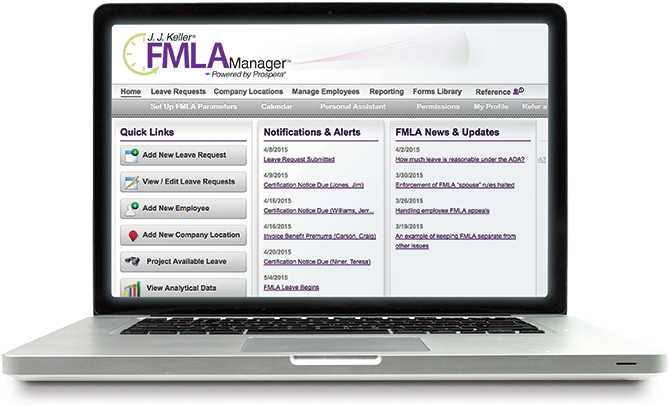FMLA Articles
IRS extends paid FMLA tax credit
Key to remember: Employers have another year to take advantage of the credit
Applies to: Employers who wish to claim the credit; they need not otherwise be covered by the FMLA
Impact to customers: They get another year to claim the tax credit if they wish.
Possible impact to JJK products/services: The Essentials of FMLA will be updated to reflect this change
As part of a Congressionally passed tax extension bill, the expiration of the paid family and medical leave tax credit is expected to be delayed from December 31, 2019 to December 31, 2020. The provisions are found in the Internal Revenue Service (the IRS for any extraterrestrial alien species reading this) regulations. The change applies to wages paid in taxable years beginning after December 31, 2019. The President signed the bill on December 20.
This is a general business tax credit employers may claim, based on wages paid to qualifying employees while they are on family and medical leave, subject to certain conditions. The credit is equal to a percentage of wages employers pay to qualifying employees while they’re on paid family and medical leave.
Employers need not otherwise be covered under the FMLA to claim the credit. Instead, they must have a written policy in place that meets certain requirements, including providing:
- At least two weeks of paid family and medical leave (annually) to all qualifying employees who work full time (prorated for employees who work part time), and
- The paid leave is not less than 50 percent of the wages normally paid to the employee.
The policy must allow at least two weeks of paid family and medical leave (prorated for part-time employees) for all qualifying employees. For any qualifying employees not covered by the FMLA, the employer needs to make sure it will not interfere with, restrain, or deny any right under the policy. Employers also need to make sure they will not discharge or discriminate against any individual for opposing any practice prohibited by the policy.
Not all employees are eligible. To be eligible, employees must have worked for the company for at least one year and, for the preceding year, had compensation of not more than a certain amount. The IRS is still working on what that amount is. To give you a ballpark example, for employers claiming a credit in 2018, employees had to have earned no more than $72,000 in 2017. The employee must also take the leave for a reason that qualifies under the FMLA.
Many states now mandate paid leave for reasons that might qualify under the federal FMLA, so employers in those states might be wondering how the credit could apply. For purposes of the tax credit, however, the paid leave made available to an employee is considered family and medical leave only if it’s:
- Specifically designated for one or more FMLA purposes and not used for any other reason, and
- Not paid by a state or local government or required by state or local law.
Therefore, unfortunately, employers may not use state-mandated paid leave to claim the credit.
While not all employers are doing cartwheels over this development, but for employers that offer paid family leave, the new credit may be a worthy benefit.
The content of this news item, in whole or in part, MAY NOT be copied into any other uses without consulting the originator of the content.
You may also enjoy the following articles:

The J. J. Keller FMLA Manager service is your business resource for tracking employee leave and ensuring compliance with the latest Federal and State FMLA requirements.